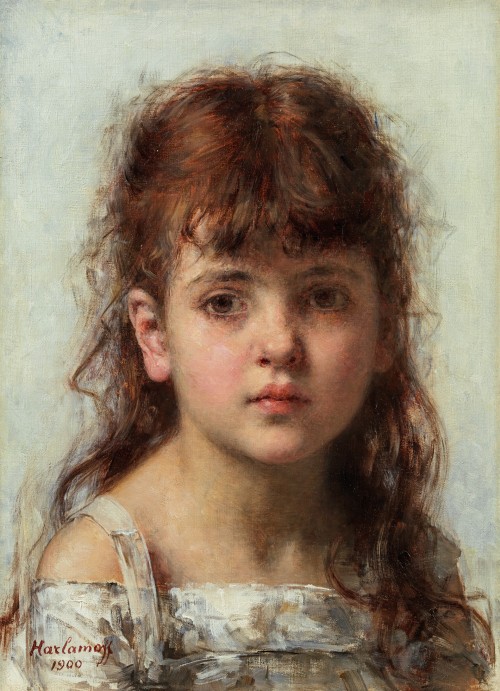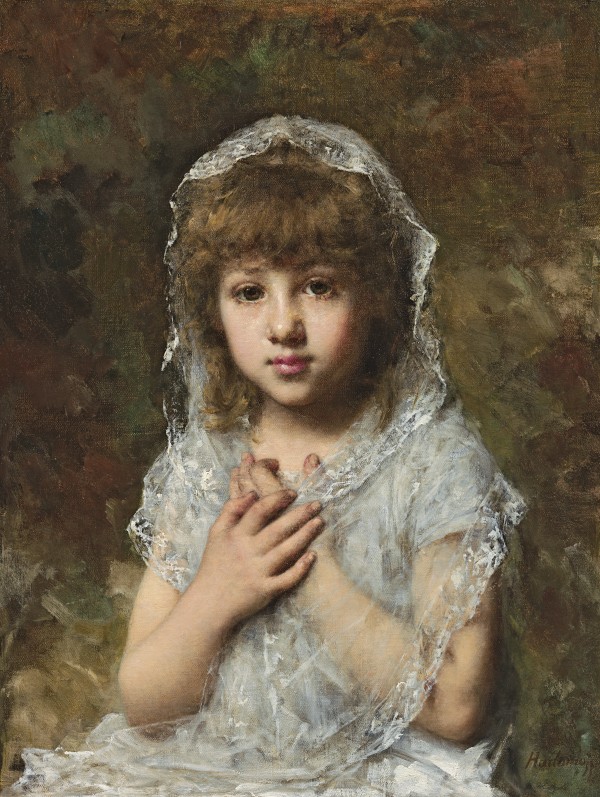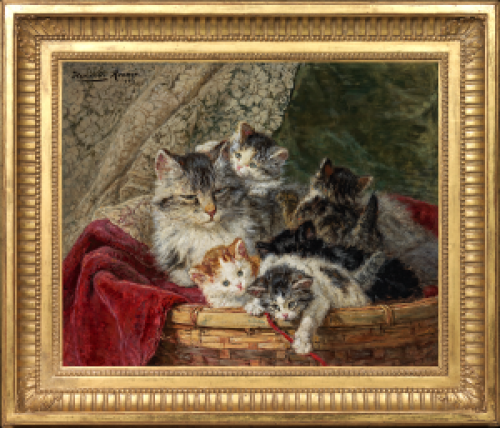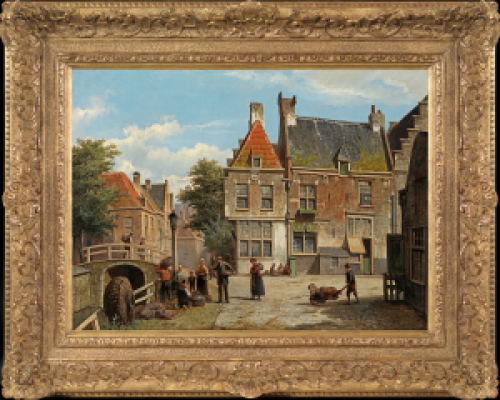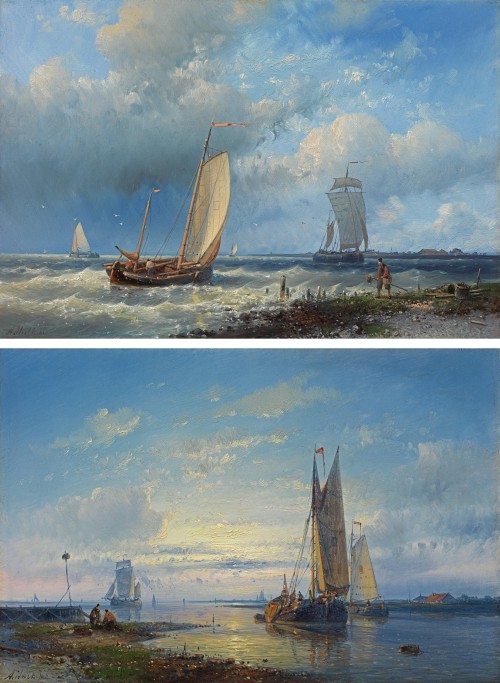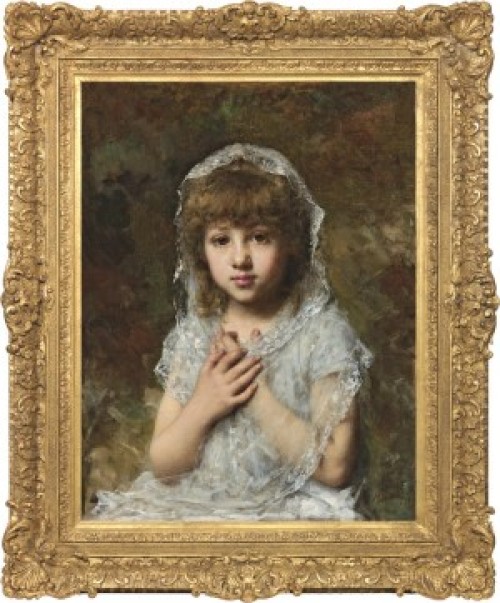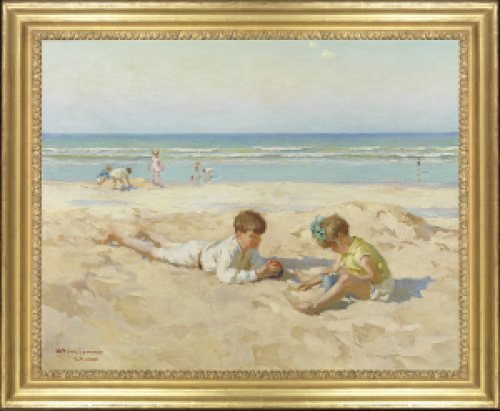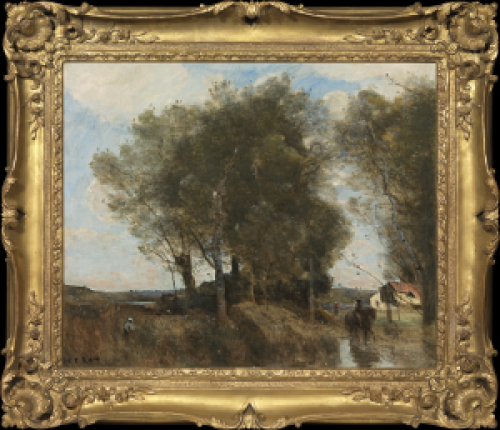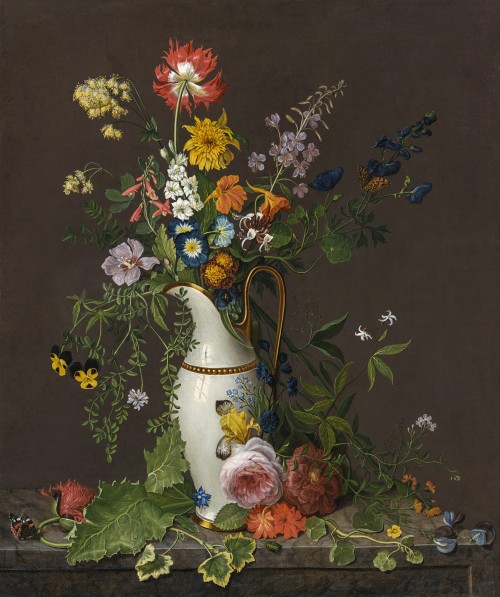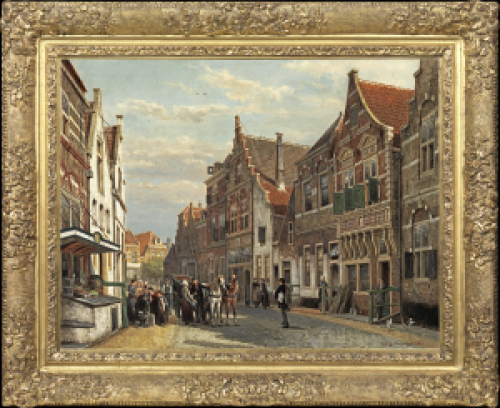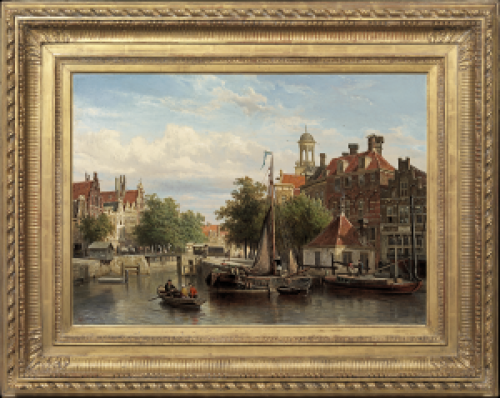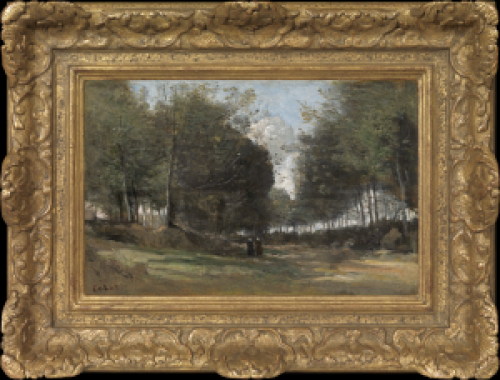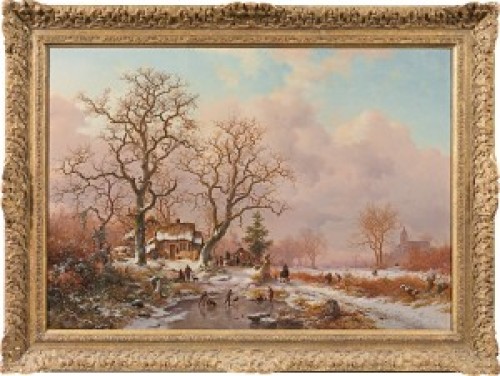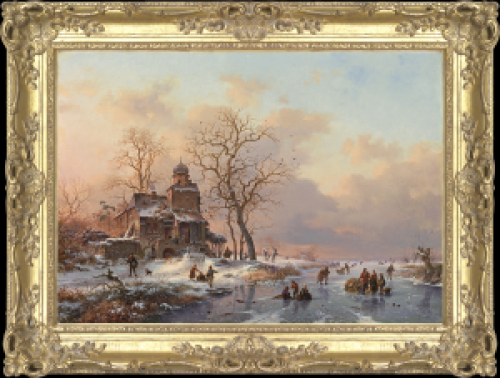ALEXEI ALEXEIEVICH HARLAMOFF
Saratov 1840 - 1925 Paris
Ref: CB 106
The young model
Signed and dated lower left: Harlamoff / 1900
Oil on canvas: 16 x 11 ⅝ in / 40.6 x 29.5 cm
Provenance:
Leonard Woodruff (1880-1970), Oklahoma, then by descent
Literature:
Olga Sugrobova-Roth and Eckart Lingenauber, Alexei Harlamoff: Catalogue Raisonné, Dusseldorf, 2007, digital addendum, A 45-P
During the second half of the nineteenth century, Russian artists sought to break from the establishment’s previous dependence on European art and to reaffirm their national heritage. This national spirit boosted genre painting and with it an interest in culture and traditions. At that time Russian artists were broadly divided into two groups or schools: The ‘Peredwischniki’ also called The Wanderers or Society of Itinerant Art Exhibitions (1870-1923), who sought to examine everyday life and Russian history in an unidealized way. In contrast, the other group of artists were mainly concerned with the creation and appreciation of beauty. Throughout his life, Harlamoff emphasized beauty as a key component of art and of the aesthetic experience. He found beauty in depicting almost exclusively young peasant girls and ladies. Historical portraits represent only a small part of Harlamoff’s oeuvre, along with landscapes and still lifes.
In this charming picture Harlamoff represents a delightful little girl, described as ‘The “lovely rose girl” type’, by O. Sugrobova-Roth and E. Lingenauber in their catalogue raisonné of the artist’s paintings. Harlamoff depicted this adorable model several times in works such as Girl with a red necklace and Girl with a pink bonnet, which led the celebrated Russian novelist and playwright, Ivan Turgenev (who was a close friend of the artist), to mention the ‘lovely rose girl’ in a letter dated 1875 (O. Sugrobova-Roth and E. Lingenauber, Alexei Harlamoff, 1840-1925, catalogue raisonné, 2007, p.106).
In the present work the girl looks directly out at the viewer. Some of her thick, auburn hair is tied back, while the rest hangs in waves around her shoulders, a short fringe framing her face. Harlmoff’s skilfully smooth rendering of the child’s features and complexion is enlivened by the broader, more impressionistic style with which he depicts her hair, clothes and the light background adding vitality to the image while simultaneously creating a foil for the sitter’s luminous head and shoulders.
Alexei Alexeievich Harlamoff was born at Saratov, Russia in 1840. He studied at the Academy of Fine Arts in St. Petersburg and won a gold medal and a travel scholarship in 1868 for his painting The Return of the Prodigal Son. This enabled him to go to Paris, where he remained, working with the great portrait painter and teacher at the École des Beaux-Arts, Léon Bonnat (1834-1922). His work was exhibited in the Russian section of the Décennale exhibition of art produced between 1889 and 1900, which was part of the World's Fair held in Paris in 1900.
In his early career, he painted many genre and religious subjects, learning his skills by copying Old Master paintings such as Rembrandt's Anatomy Lesson in the Mauritshuis in The Hague. He also became a respected portrait painter, with such important sitters as Tsar Alexander II and Prince Demidoff. Perhaps his most beloved subjects were informal portraits of peasant girls. These sitters were painted for their beauty and innocence rather than their fame. Harlamoff eloquently evoked the symbolism of the flower representing the short-lived innocence of youth so popular with artists of the end of the nineteenth century, while capturing a uniquely Russian ambience in the details of dress and facial features.
Harlamoff was also interested in the range of emotions within facial expressions; his A girl in a white veil with her charming, contemplative gaze is an excellent example. It was probably the sweet, smiling expressions of his Children playing with Flowers that drew the admiration of Queen Victoria when she saw it in the Glasgow International Exhibition in 1888.
The work of Alexei Harlamoff is represented in the Alexander III Museum in St Petersburg, the Tretiakov Gallery in Moscow and in the Brobinksi Collection.

